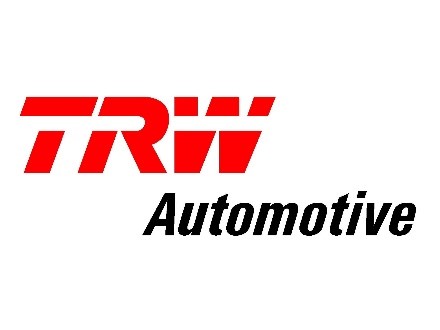Auto Dealers -Be Aware of emerging
competition issues in your industry -An eye
opener***
The Indian automobile industry is the fourth largest in the world. It is the largest in the two and three-wheeler segment, second largest in the bus segment and the fourth largest in the passenger car segment, in terms of manufacturing volume.
Automobile dealers are a vital part of the automobile market supply chain and are the main point of contact for the end consumer. They also play a key role in the aftermarket, providing services such as supply of spare parts, maintenance and repairs of the vehicles, and other complimentary services like insurance and financing of vehicles. However, automobile dealerships are frequently subjected to unfair trading conditions by the Original Equipment Manufacturers (“OEM”).
How does the competition law , which is mandated to establish fair market practices and perfect competition in all sectors of the economy, affects the various stakeholders in the automotive industry , both OEMs and their dealers ( and their respective trade associations like FADA, SIAM , ACMA ) ?
Whether the auto dealers, most of whom are “exclusive authorised dealers” of their respective OEMs , not only for resale of the primary product e.g. two wheelers and four wheelers vehicles but also for after sale services such as supply of auto spare parts , maintenance and repairs of the vehicles and complimentary services (like insurance and financing of vehicles ) can be benefitted from the knowledge of the law?
You will be surprised to know that of the 104 antitrust inquiries initiated by the Competition Commission of India (“CCI”) in the automobile sector as on 31 March 2018[1], the majority arise out of “vertical (anti-competitive) restraints” imposed by OEMs on their authorised dealers. The above mentioned vertical restraints include restrictions on the discounts which dealers can offer to their customers competitively to stay ahead of the competition or, tying the main product i.e. automobiles with ancillary products or services such as lube oil, engine oil, lubricants, batteries, accessories, merchandise items, insurance, and finance etc and threats to terminate the dealership if they fail to adhere to their directions, often given as a matter of “Company Policies”. There are also issues relating to exclusivity imposed on dealers by OEMs, which have also been examined by CCI. It was on these issues that the CCI, by way of an order dated 04 July 2019 under Section 26(1) of the Competition Act, 2002 (“Act”) directed investigation against the largest auto maker, Maruti Suzuki India Limited (‘Maruti’). The investigation against Maruti is the third such investigation directed by the CCI, in the recent past, regarding similar vertical restrictions placed on dealers. Previously, by an order dated 14 June 2017[2] the CCI imposed penalty of INR 87 Crores on the second largest auto maker , Hyundai Motor India Limited (‘Hyundai’) for similar vertical anti-competitive restraints.[3] Another investigation on similar allegations, against Honda Motorcycle and Scooter India Pvt. Ltd (‘Honda Motorcycle’), is approaching final deliberation by the CCI.[4]
In this blog, I broadly discuss the clauses in the dealership agreements and/or vertical restrictions imposed on dealers by the OEMs, which are potentially anti-competitive, and are the subject matter of the investigations by the CCI.
Discount Control
Section 3(4)(e) read with Section 3(1) of the Act, prohibits agreements which result in ‘resale price maintenance,’ provided they cause an appreciable adverse effect on competition. Resale price maintenance is defined under the Act as “any agreement to sell goods on condition that the prices to be charged on the resale by the purchaser shall be the prices stipulated by the seller unless it is clearly stated that the prices lower than those prices may be charged.”
Resale Price Maintenance includes any agreement that has as its direct or indirect object the establishment of a fixed or minimum resale price level. This includes fixing the distribution margin or the maximum level of discount, making the grant of rebates or the sharing of promotional costs conditional on adhering to a given price level, linking a resale price to the resale prices of competitors, or using threats, intimidation, warnings, penalties, delay or suspension of deliveries as a means of fixing the prices charged by the buyer (i.e., retailer).
Thus, any attempt to control the lowest price that the dealers may sell the automobile including by restricting the discount that the dealers may offer to end customers, may amount to ‘resale price maintenance.’ In the cases dealt with by the CCI to date, it has also been observed that the OEMs ensure compliance with the recommended discounts through a well-designed Discount Control Mechanism (DCM) through the appointment of monitoring agency/‘mystery shopping agency’ and the imposition of penalty on erring dealers.
Mandatory obligation to purchase of complementary goods/consumables/services
Section 3(4)(b) read with Section 3(1) of the Act, prohibit agreements that compel the buyer to exclusively deal with the seller or otherwise restrict the buyer from acquiring or dealing in goods of third parties. Further, Section 3(4)(d) read with Section 3(1) of the Act also prohibit any form of restrictions placed on the buyer by the seller, or vice versa.
Restricting dealers from procuring oil &and lubricants, batteries, accessories, merchandise items, insurance, and finance only from designated sources are in the nature of exclusive supply agreement and refusal to deal and may be anti-competitive. Such restrictions prevent dealers from procuring similar items from other sources at cheaper prices. The CCI in the Honda Motorcycle case has held that such restrictions create entry barriers, scuttle choice of consumers, result in higher prices and deny benefits to the ultimate consumers. Thus, it is likely to result in an appreciable adverse effect on competition.
Compelling dealers to purchase recommended oil and lubricants, batteries etc. may also constitute a tie-in arrangement as per Section 3(4)(a) read with Section 3(1) of the Act. The sale of the main product i.e. automobiles cannot be tied-in with the purchase of ancillary products or services such as lube oil, engine oil, lubricants, batteries, accessories, merchandise items, insurance, and finance etc . Additionally, the CCI also appears to consider that the dealers have the right to engage with advertisement agencies of their choice for undertaking promotional activities. In the Honda Motorcycle case, the CCI observed that an arrangement whereby advertising cost is debited from the dealers’ accounts on the basis of number of vehicles dispatched to them is in the nature of a tie-in arrangement.
Exclusivity/Fixation of limits of geographical operation
Section 3(4)(c) read with Section 3(1) of the Act prohibits agreements that limit, restrict or withhold the output or supply of any goods or allocate any area or market for the disposal or sale of the goods.
Thus, if OEM restrict its dealers to only sell within their designated areas, such territorial restriction may be in contravention of Section 3(4) read with Section 3(1) of the Act, provided such restriction is likely to cause an appreciable adverse effect on competition (AAEC) in the relevant market[5] .
In addition to examination of conduct under Section 3(4) of the Act, if an OEM is dominant in a relevant market, restrictions placed on dealers can also be examined under Section 4 of the Act.
Other Issues which may attract CCI scrutiny
In addition to serious infringements such as controlling discounts through DCM/mystery shopping agencies etc, which have been penalized by CCI , there are also other restrictive conditions which may be anti-competitive.
Restriction on operating competing dealerships
An automobile dealer performs several functions besides sale of vehicles, spare parts, accessories thereof. The dealer also undertakes after-sale service including repairs and maintenance services for its customers. In addition, an authorized dealer has also to perform ancillary activities like arranging finance and insurance for sale/purchase of pre-owned or “second hand” vehicles for its customers.
In most cases, the automobile dealership works on a “single brand franchise” model i.e. the dealer who is known as the “authorized” dealer for a particular manufacturer/OEM, is authorized to only sell vehicles of a particular OEM in the primary market. Similarly, the aftersales activities undertaken by the dealer such as after-sale service and repairs and maintenance services are also restricted to that particular OEM. Usually, there is a clause in the dealership agreement, which explicitly prohibits the dealer from operating dealerships of competing OEMs, without prior permission of the OEM. If the dealer is restrained from operating or otherwise investing in dealerships of competing OEMs, this may amount to an unfair restriction and may be anti-competitive.
Hub and Spoke model[6]–
Some OEMs design their marketing system for both sale of vehicles in the primary market and for repair and maintenance services etc. In the secondary markets in such a manner that the OEM acts as the “hub” around which all the dealers revolve around in the same direction like the “spokes” attached to the hub in wheel. Thus, the marketing policies designed by OEMs as the hub must be compulsorily followed by all its authorized dealers acting as spokes and any dealer deviating from any policy becomes a misfit in the scheme of marketing so designed by the OEM and becomes liable to be terminated. For instance, the dealers must order for purchase of vehicles in advance from the OEM in a “push” system which is driven by the manufacturer’s agenda. No credits are given to dealers for such advance purchase and monthly targets are set by the OEM for each dealer for such “orders” as “wholesale targets” besides similar monthly targets for sale of each model of vehicle as “retail targets”. This necessitates the dealers to make financial arrangements with banks to maintain sufficient funds for meeting the wholesale targets for “order” of a fixed number of vehicles for each month. The OEM ensures that the dealers spell out details of such financial arrangements known as “inventory funding” at the time of their appointment as dealers. Such conditions are incorporated in the dealership agreement signed at the time of appointment of the dealer. Besides , some OEMs also prescribe a “Business plan” for each Calendar year in which targets for both wholesale order and retail sale for each model of the Brand as well as targets for inventory funding and manpower plans are prescribed for the dealer. In some cases, the business plan may prescribe the minimum score for the “Customer Satisfaction Index” (CSI) and the “Service Satisfaction Index” (SSI) for each half year in the given Calendar year.
Locked -in dealer[7] -Accordingly , in the above “water tight” marketing system strategically created by some OEMs in India , the dealer , who puts in heavy capital investment for , both, the infrastructure (for setting up his show room) as well as for the after sales services (by hiring reputed mechanics etc) becomes heavily dependent on the OEM and becomes a sort of “compulsive” and “locked in” partner of the OEM , who dare not speak against the OEM fearing reprisals in the form of withdrawal of credit facilities , incentives , pushing sale of unpopular models etc and are forced to continue to meet the high targets imposed by the OEMs.
Consequently, we have also come across cases where , dealers , in order to meet the unrealistic high sales targets , were found resorting to unfair means such as booking/retail of cars in fictitious names and raising false and fabricated or fake invoices for sale of vehicles by resorting to the practice of “billed but not delivered” (BBND) and entering the same in the Global Dealer Management Software (GDMS) provided by the OEM , to meet the inflated and unrealistic target for retail sales[8].
In addition, imposing terms such as mandatory purchase of accessories, merchandise items, forceful billing of slow-moving vehicles, compulsory deduction of advertising expenses, restrictions on insurance and finance options, making purchase of Annual Maintenance Contract (AMC), EW and RSA (Roadside Assistance) contingent upon purchase of booklets from authorized agent, termination of dealership without prior notice and refusal for stock buyback may also be anti-competitive and may constitute an abuse of dominant position under Section 4 of the Act, provided the OEM is found to be dominant in the relevant market .
Is there a remedy under the Act?-
Automobile dealers and OEMS operate at different levels of the supply chain in the automobile market. Therefore, restraints placed on dealers by the OEMs can be examined by the CCI as “vertical restraints” under Section 3(4) of the Act. In addition, unfair restrictions can also be examined under Section 4, provided the OEM is dominant in the relevant market.
In case, the CCI finds the restrictions to be anti-competitive, it can impose penalty on the OEM, as it may deem fit, which can go up to ten per cent of the average turnover for the last three preceding financial years. Further, the CCI can also direct the erring OEM to stop such restrictive practices and may also direct the modification of the dealer agreements.
You may be interested to know that in the first case decided by CCI in the Auto sector in 2014 , CCI imposed penalty on 14 car makers (OEMs) for indulging in market abuse and unfair vertical restraints ( “Shamsher Singh Kataria Case/ Auto Spare Parts Case ” ) and the OEMs have not been successful so far in spite of challenges against the CCI Order before several High Courts ( The OEMs were finally directed to approach the Appellate Tribunal , the NCLAT, by the Delhi High Court’s landmark ruling dated 10 April 2019 ). In the Auto Spare Parts Case the CCI has found each Brand of OEM to be dominant in its respective brand , due to unique characteristics of each brand of cars etc.
Therefore , if a particular OEM is found to be dominant in a relevant market ,under Section 4 of the Act, and a dealer if found to be “locked in” business partner of the OEM , such dealer can approach CCI for conducting an inquiry against any unfair and one-sided clauses in the dealership agreement as constituting an “abuse of dominant position “ by such OEM[9].
*** This blog is based on an article co authored by me with Anand Sree , my senior associate , which was published in the FADA Journal , September 2019 issue.
[1] Competition Commission of India Annual Report for the FY 2017-18, available at https://www.cci.gov.in/sites/default/files/annual%20reports/AnnualReportEnglish2017-18.pdf , last accessed on 01 October 2019.
[2] The CCI order was, however, quashed in appeal by the National Company Law Appellate Tribunal (NCLAT) vide its order dated 19.8.2018. The NCLAT’s order has been challenged by the CCI in Supreme Court and the appeal is pending.
[3] Case No. 36 and 82 of 2014.
[4] Case Bo. 17 of 2017.
[5] To determine whether such an arrangement may cause AAEC requires detailed analysis in terms of Section 19(3) of the Act .
[6] This will be a concern only when the OEM is found to be dominant in the relevant market.
[7] This will be a concern only when the OEM is found to be dominant in the relevant market.
[8] These practices were noticed in a complaint filed by us on behalf of a dealer against Hyundai in Punjab.
[9] This is an idea which is still to be tested and there has not been any such case so far.







